When approaching the Helgeland coastline, in northern Norway, you can’t miss the Svartisen glacier spilling down the side of Almlifjellet mountain. Below, the gin-clear Holandsfjorden fjord – an extension of the Norwegian Sea – reflects the blue-toned mountain like a mirror.
It’s in this unspoiled environment that you’ll find Svart, which aims to be the world’s first energy-positive hotel when it opens in 2021.
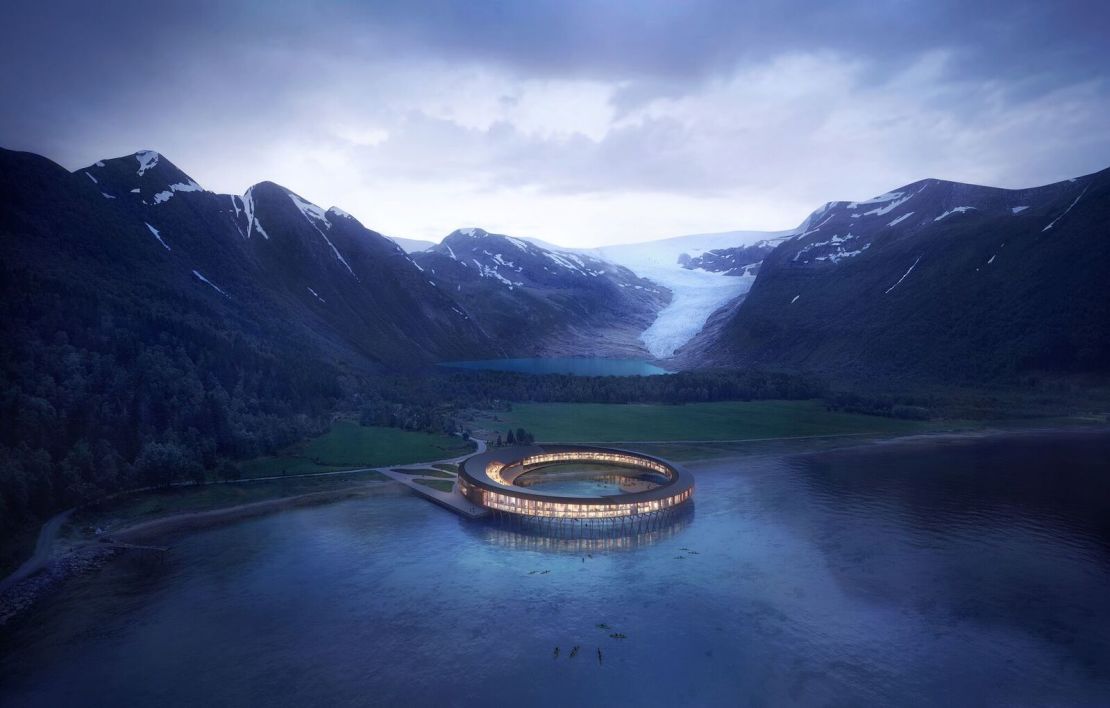
Designed by international architecture firm Snøhetta and owned by Arctic Adventure of Norway and real estate company MIRIS, the futuristic circular retreat will harness geothermal and solar energy to produce a surplus of solar power that can be redirected back to the grid.
“Nature in the Arctic is fragile and pristine. We have to respect the natural beauty of the site and not ruin what makes Svartisen an attraction in the first place,” says Zenul Khan, Snøhetta’s Svart project manager.
“By creating such a sustainable building, we aim to encourage a more sustainable approach to tourism by making people conscious about the way we experience exotic locations.”
A powerful design
The Arctic Circle has a mystical allure for travelers seeking to experience one of the world’s most remote regions before it melts away. In 2015, 3.6 million tourists visited Norway alone, a 12% jump from 2014.
The rise in the region’s popularity inspired tour operator Arctic Adventure of Norway to create more sustainable ways to explore Norway’s natural beauty.
“The region has been under a lot of pressure for several years and the tourism keeps increasing,” says Trine Stølsnes, marketing director at Arctic Adventure of Norway. “We want … to make sure that Svartisen, and the rest of the region, can accommodate growth while safeguarding the landscape.”
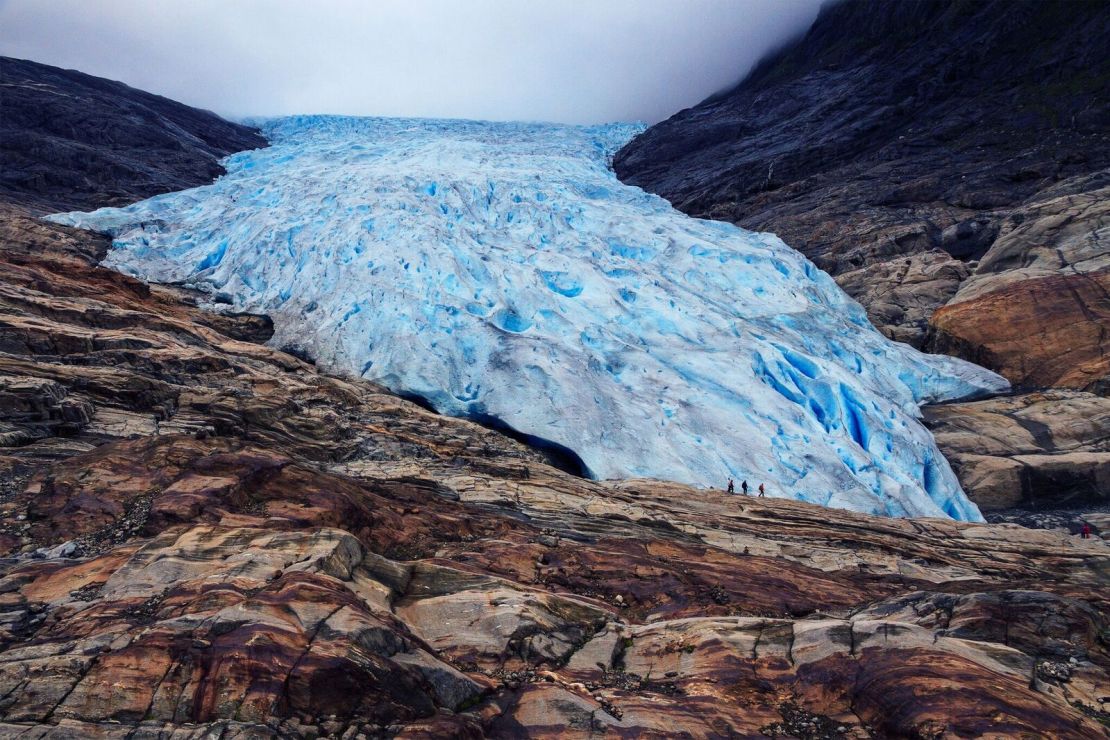
That’s where Svart comes in.
As a Powerhouse building, it will by definition “produce more renewable energy (during its lifetime) than it uses for materials, production, operation, renovation and demolition.” Powerhouse is a group of Norwegian NGOs and companies, including Snøhetta, dedicated to energy-positive architecture.
Svart is the group’s first hotel.
“Hoteliers need to take this responsibility and make sure that also the tourists understand their role when visiting … an environment like this,” says Stølsnes.
Closing the loop
To meet the Powerhouse standard, the Snøhetta team had to optimize energy usage across every aspect of the hotel.
The first tactic was deciding to build the property from naturally occurring local materials, such as stone and weather-resistant wood. These require minimal energy to create and transport, unlike fossil fuel-derived cement or steel, and therefore will lower the building’s carbon footprint.
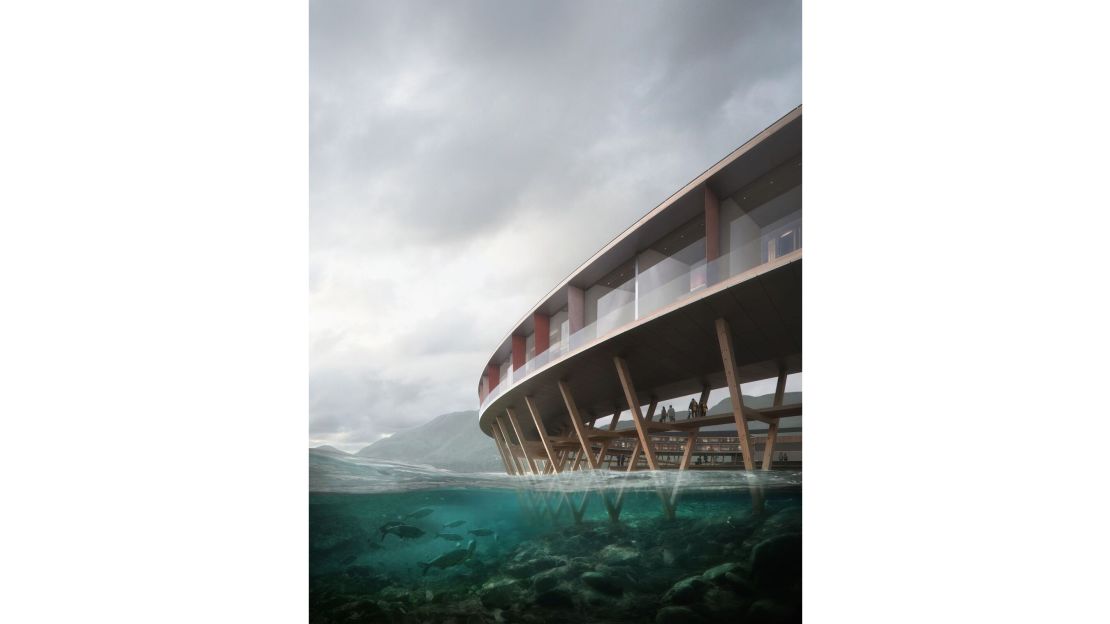
Rationalizing building systems including ventilation, cooling and heating will also keep energy expenditure down, says Khan. Shaded terraces, for example, will eliminate the need for air conditioning during the summer, while geothermal wells will heat the building in winter.
“We’ve been able to decrease energy consumption by 85% (compared with modern hotels),” says Khan.
Here comes the sun
Solar power is what will take the hotel from energy efficient to power positive.
Thanks to its northerly latitude, at roughly 66 degrees north of the equator, Norway’s coastline enjoys up to 20 hours of sunshine during summer. The architects conducted an extensive mapping of solar radiation in the region, and how it behaves in relation to the mountainous landscape, in order to most effectively harness this resource.
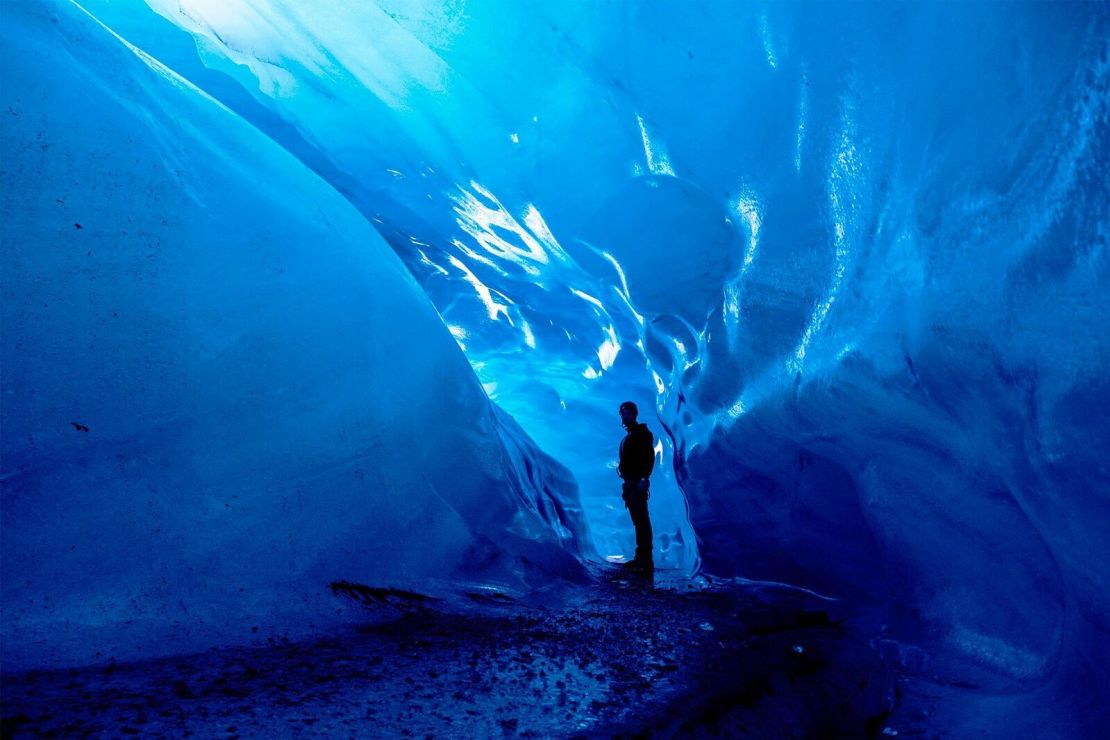
Based on the angles of the sun’s rays, the team concluded that a circular blueprint would optimize solar energy harvesting – Svart’s primary source of energy. Svart will feature about 51,000 square feet (4,800 square meters) of solar panels on its roof, which will provide more than enough energy to power the hotel’s everyday functions.
Leave no footprints
Like a wooden UFO hovering above the water, the majority of Svart will sit on stilts, talking architectural cues from a traditional type of Norwegian seasonal house used by fishermen. Rorbu are built half on land, half on water, with wooden poles securing the area that plunges into the fjord.
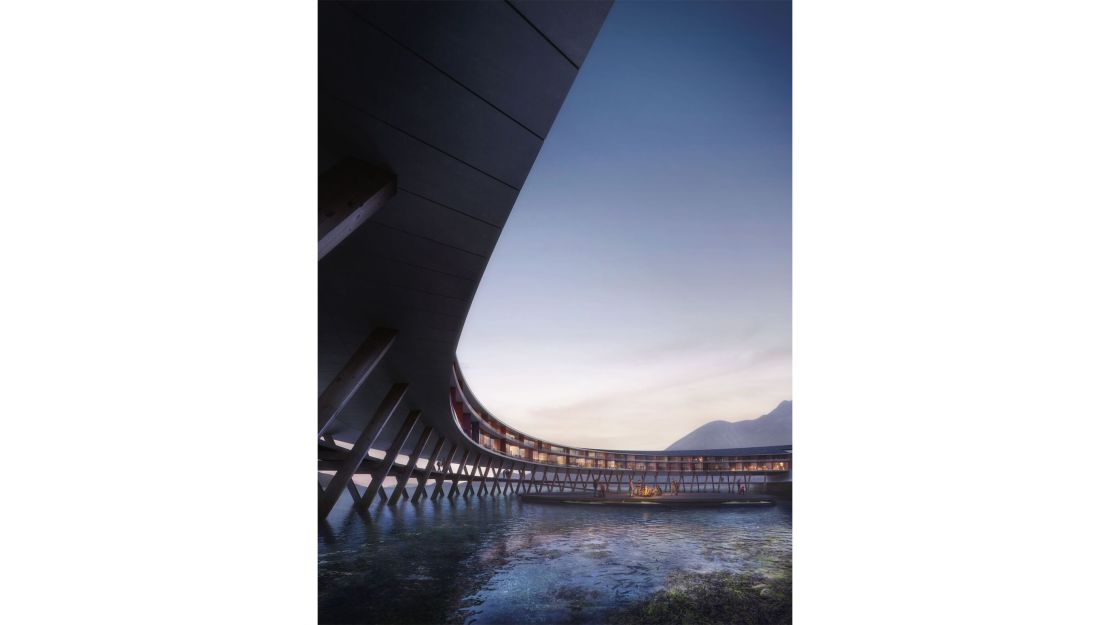
“These are old building traditions that are well adapted to a tough climate by the Norwegian coastline,” says Khan. “They are both a functional and aesthetic echo of Norway’s second most important industry: the fishing industry.”
At Svart, a boardwalk will be built between the wooden poles, under the hotel but above the water, for guests to enjoy.
Land of the midnight sun
Svart’s unique aquatic location and window-lined circular shape mean that each room and restaurant will enjoy uninterrupted views of the fjord.
“What is truly special about the hotel is its 360-degree views. No view from the hotel is dull: you see the fjord, the mountains, the sky,” says Khan. “Each room is, in a way, assigned its own, unique view.”
For those concerned about getting too close to nature in a biting Norwegian winter, Stølsnes says guests might be pleasantly surprised.
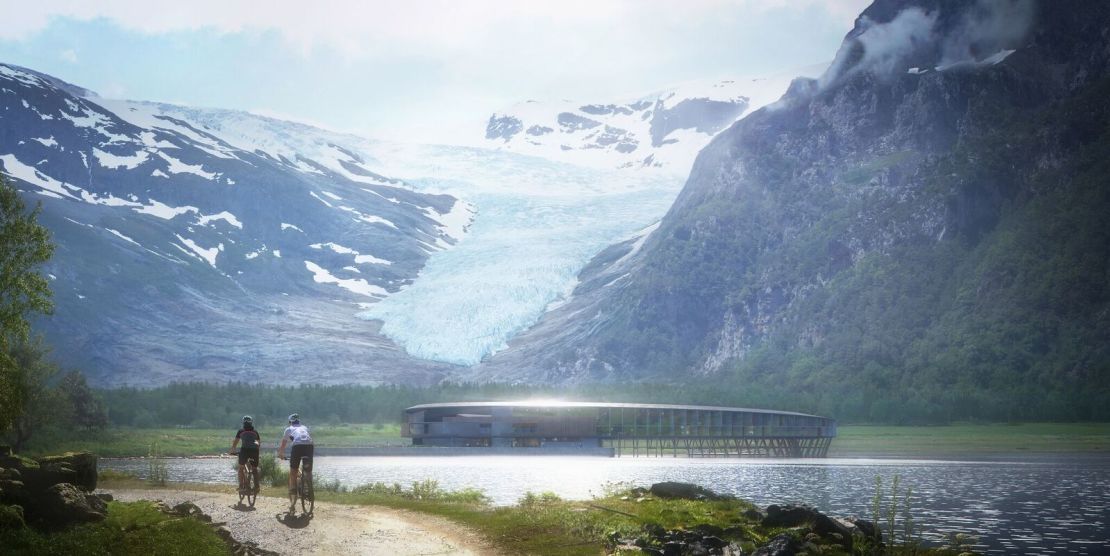
“It can get quite cold during winter, of course, but actually, the Gulf Stream (lukewarm waters flowing up from Mexico) ensures milder winter temperatures (than expected), maybe around 32 degrees Fahrenheit – perfect for exploring and experiencing the landscape.” The surrounding mountains act as a wind shield, he adds.
In the summer, 75 degree Fahrenheit days are perfect for kayaking, hiking, and provide glorious midnight sun.
But it’s in those chilly winter months that travelers have the best chance of seeing the aurora borealis dance above the Svartisen glacier and snow-capped mountains.
“These types of natural phenomena, in a way, represent a new type of luxury,” says Khan. “It’s not about gold-plated sinks and bathtubs, but about experiencing nature in its purest form.”









